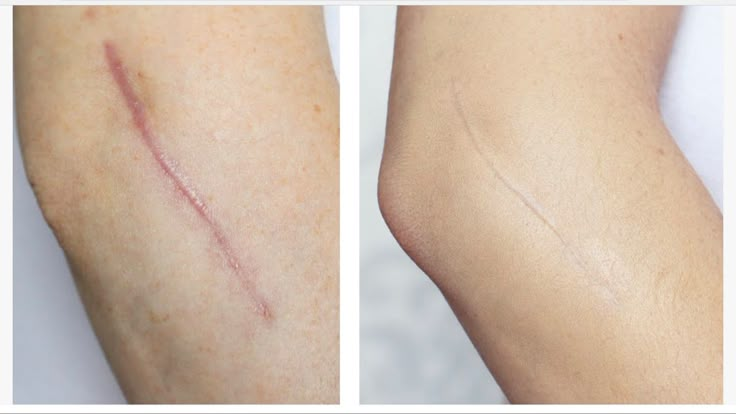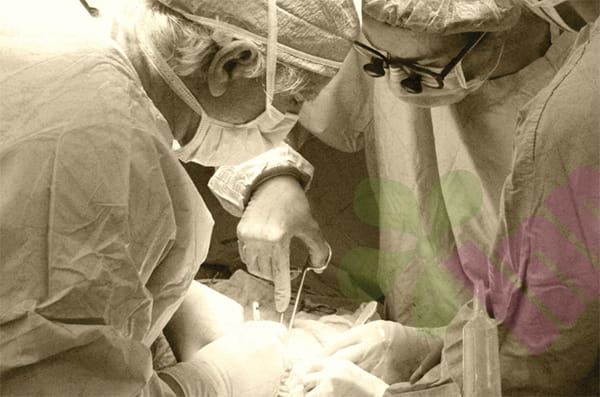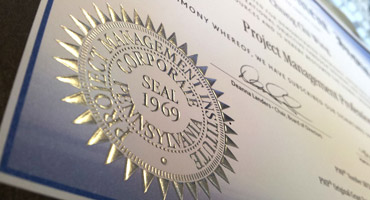After the surgery, the stitches were removed, and the wound healed. I felt relieved, but after a while, the scar began to become red and swollen. It felt hard to the touch, and even a little itchy or slightly painful. This sudden change would make anyone worried: Is it infected? Will it leave a big scar? Don't worry, this kind of scar redness and swelling is actually quite common during postoperative recovery, especially in the first few months after surgery. Today, let's talk about what this annoying redness and swelling are all about, and how to deal with it scientifically at home and in the hospital.

Why do scars become red and swollen?
Simply put, scar redness and swelling are a phenomenon of excessive force when the body tries to repair the wound. In the later stages of wound healing (several weeks to months after the stitches are removed), the body is busy rebuilding tissues, collagen is overproduced, and new blood vessels are particularly numerous, which makes the scar look red, feel hard, and even bulge. In addition to this most common manifestation of the hyperplastic stage, there are several other reasons: for example, there is a little chronic inflammation under the scar; or you have some rejection of the suture material; or the scar is often rubbed by clothes and pulled by joint activities; of course, if you have a scar physique, then the risk of redness, swelling and hyperplasia is higher. The most important thing to be vigilant about is infection! If the red and swollen area feels hot, painful, or even pus is flowing out, or if the person has a fever, you must go to the hospital immediately without delay.
Case sharing :
Ms. Li had an abdominal surgery three months ago. After the stitches were removed, the wound looked fine. But in the past month or so, the middle part of the scar became redder and redder, and a hard ridge swelled up. It was itchy when clothes rubbed against it, and it was occasionally painful. She was worried that it might be inflamed, so she went to the hospital immediately. The doctor found that the scar was red, swollen, and hard, but there was no suppuration or fever. Infection was ruled out, and the diagnosis was a typical manifestation of scar hyperplasia. In addition to recommending conventional silicone products, the doctor specifically mentioned Ms. Li's situation. If a moist healing dressing (such as a hydrocolloid dressing or a silicone dressing) is used in the early stage when the wound has just healed after the stitches are removed, it may help reduce the redness, swelling, and hyperplasia in the later stage. Although it is in the hyperplastic stage now, while insisting on using silicone products, you can also consider using hydrocolloid dressings for a short period of time in places where the redness and swelling are particularly obvious or there is slight damage and exudation to create a moist environment to help fight inflammation and soften the scar. Ms. Li adhered to the doctor's advice and took care of it. After a few months, the redness and swelling subsided significantly.
To deal with redness and swelling, these methods work!
Don't be lazy about basic care:
Clean gently: Wash the scar and surrounding skin with clean water or mild soap, pat dry gently, don't rub hard.
Sun protection is a must: New scars are most afraid of the sun! When going out, you must cover the scars tightly (clothes, hats) or apply high-factor sunscreen (SPF 30 or above, PA+++), and persist for at least six months to a year.
Reduce friction and pulling: Wear loose and soft cotton clothes to cover the scar area. Do not scratch it.
Moist healing dressings show their power:
Hydrocolloid dressing: Looks like a transparent "thick band-aid". It can form a moist, airtight environment on the surface of the scar. It has many benefits: it can absorb a small amount of exudate, reduce inflammatory reactions, isolate external stimuli, relieve pain and itching, and help soften and flatten raised scars. It is especially suitable for early wounds that have just healed, red and swollen scars with slight exudate or damage, or areas that are particularly sensitive to friction from clothing. Make sure the skin is clean and dry before applying, and change it regularly according to the product instructions (usually 3-7 days).
Silicone dressing/patch: This is a long-standing star in scar removal. Silicone gel or patch can also provide a certain moist environment, mainly by reducing water evaporation and inhibiting capillary proliferation to reduce redness, soften and flatten hyperplastic scars. Gel should be applied thinly twice a day; the patch should be applied tightly, at least 12 hours a day, and the key is long-term persistence (3-6 months or even longer).
Massage helps soften the scar: After the scar epidermis has completely grown firm (with no breaks), you can apply silicone gel or moisturizing oil, then use the tips of your fingers to press and massage in circles perpendicular to the scar, with a little force, for a few minutes each time, once or twice a day. This will help break up the nodules and promote softening.
Use a cold compress to relieve discomfort: If the scar is red, hot, and itchy, you can wrap an ice pack in a clean towel and apply it for a few minutes (don't apply it directly to the skin). This can quickly relieve the discomfort.
Take medication according to your doctor's advice: some ointments containing onion extract, heparin, etc., may have an auxiliary effect, but don't use hormone ointments on your own! Be sure to consult a doctor.
It takes a long time for scars to go from red and swollen to gradually flattening, softening, and whitening, which usually takes half a year to a year or even longer. Don't stare at it all the time, which will only make you upset, and don't listen to folk remedies and apply anything randomly (such as ginger and toothpaste, which may be more irritating). Adhere to scientific care, and once those dangerous signs appear, don't hesitate to see a doctor immediately.
For more information on Innomed®Silicone Scar Dressing, refer to the Previous Articles. If you have customized needs, you are welcome to contact us; You Wholeheartedly. At longterm medical, we transform this data by Innovating and Developing Products that Make Life easier for those who need loving care.
Editor: kiki Jia

 English
English عربى
عربى Español
Español русский
русский 中文简体
中文简体








